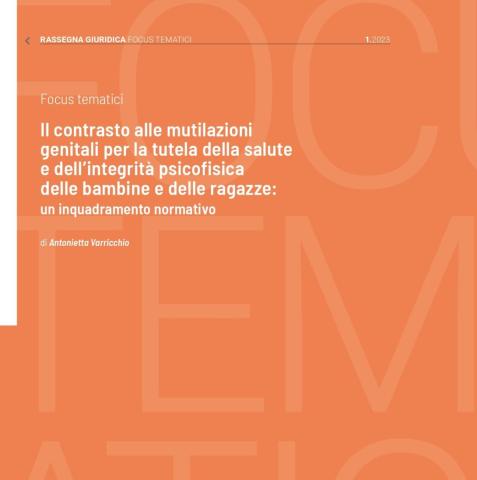
The fight against female genital mutilation: a legal framework
The fight against genital mutilation for the protection of the health and psychophysical integrity of girls and young women: a regulatory framework
Female genital mutilation (FGM) is defined by the World Health Organisation (WHO) as a harmful traditional practice that involves the total or partial removal of external female genitalia, or other lesions to the female genital organs, for reasons unrelated to medical aspects. They are usually performed by a traditional circumciser with a blade and no anaesthetic.
The World Health Organisation states that female genital mutilation does not bring benefits of any kind, but can cause enormous risks (in the short and/or long term) to women's psychophysical health: intense pain, excessive bleeding, difficulty urinating, infections, infertility, psychological problems, decreased sexual pleasure, complications during childbirth and increased risk of neonatal deaths.
The issue, however, does not concern only the physical aspect and health: female genital mutilation is in effect a violation of the human rights of girls and women, especially because it is practiced without the consent of the girls on whom it is imposed. It is a very serious form of gender discrimination that is reflected in an infinite series of aspects of life, generating further inequality.
The main national and european legislation on The fight against female genital mutilation is attached.
| Attachment | Size |
|---|---|
| 159.2 KB |

